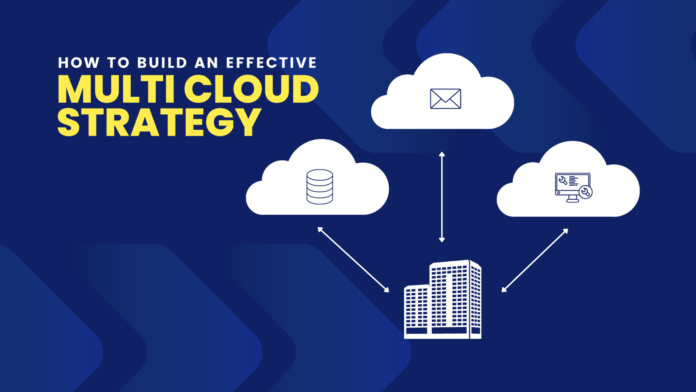What is multi-cloud?
A multi-cloud strategy is when a company uses two or more cloud computing platforms to handle different kinds of work. To maximize the advantages of each distinct service, businesses may decide to leverage resources from multiple different providers rather than relying solely on one cloud vendor.
Combining platform as a service (PaaS), infrastructure as a service (IaaS), and software as a service (SaaS) might be referred to as a multi-cloud solution. It might also mean utilizing a variety of public and private cloud technologies. The phrase is typically used by IT specialists to refer to a plan that makes use of multiple public cloud services.
Why do organizations adopt a multi-cloud strategy?
Multi-cloud strategies are used by organizations for a variety of reasons. Some executives wish to lower financial risk by avoiding reliance on a single cloud provider. Adopting a responsive strategy may be challenging for a business if it becomes locked into a single provider. Some businesses choose to employ a multi-cloud approach in order to reduce the possibility of a localized hardware malfunction. An on-site data center failure of this kind might take the whole business offline. Multi-cloud significantly lowers the chance of disastrous failure.
Using multi-cloud solutions can also be a good strategy to fight shadow IT, or the unauthorized apps that workers use even if IT isn’t in charge of them. This issue typically occurs when an organization’s IT policies fall short of its requirements, in which case a multi-cloud infrastructure can be useful. It enables customers to adhere to security standards while taking advantage of selected cloud technologies.
IT stakeholders can use the tools provided by cloud service providers to manage a multi-cloud infrastructure. Alternatively, they might make use of a multi-cloud management platform to simplify things. There isn’t a single best practice guideline for multi-cloud management because the use cases of every firm will differ.
Benefits of the multi-cloud approach
Increased ROI

A multi-cloud strategy gives stakeholders the freedom to select the exact solutions that best suit their company. The company can assign resources to several cloud providers, make the most of those resources, and only pay for what they use as a result of a variety of complex and varying business needs.
Advanced security
Similar to hybrid cloud, multi-cloud enables enterprises by maximizing computing resources and upholding stringent security compliance. Additionally, multi-cloud lowers the chance that mission-critical apps could be rendered inoperable by a distributed denial of service (DDoS) attack. Advanced cloud security mechanisms pay for themselves when a business can lose thousands of dollars due to merely one hour of outage.
Freedom of choice
An enterprise might not be able to get all of the computing services it needs from a single cloud provider. Vendor lock-in may also cause concern for a number of financial stakeholders. Moving away from an architecture built from the ground up for another provider’s cloud environment could be challenging if the company discovers a better offer with another provider.
Reliable architecture
Redundancies produced by using various cloud solutions lower the possibility of a single point of failure. The possibility that a single service outage may bring the entire company offline is decreased by using multiple clouds. By enclosing sensitive data inside a safe, local network, hybridization provides an additional degree of security.
Better disaster recovery
There is very little chance that several cloud providers will experience outages or downtimes at the same time. Service level agreements are in place with providers like Google Cloud Platform, Microsoft Azure, and Amazon Web Services (AWS) to safeguard customers against service interruptions. Utilizing two or more of these services greatly reduces the risk of disaster and enhances company continuity.






